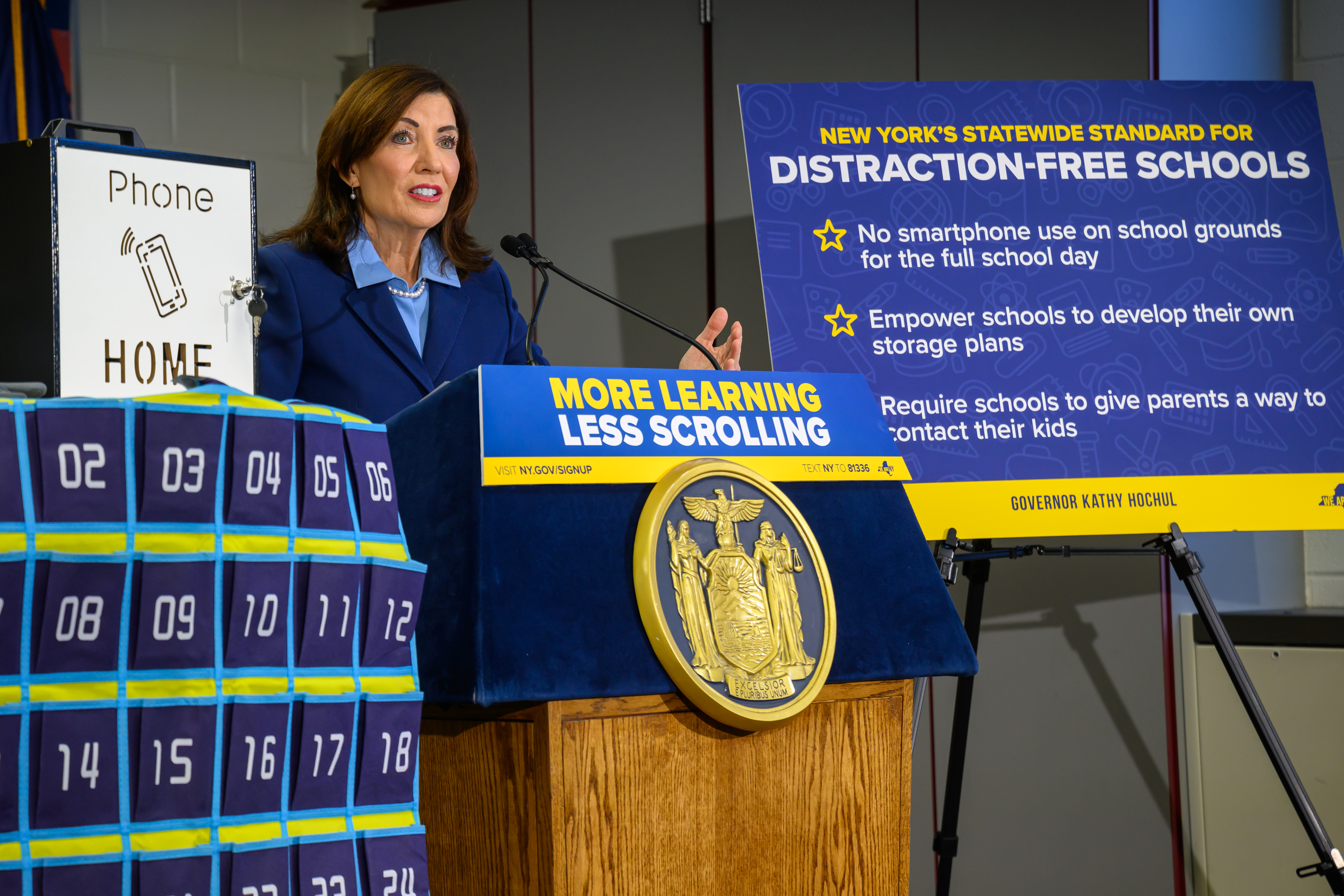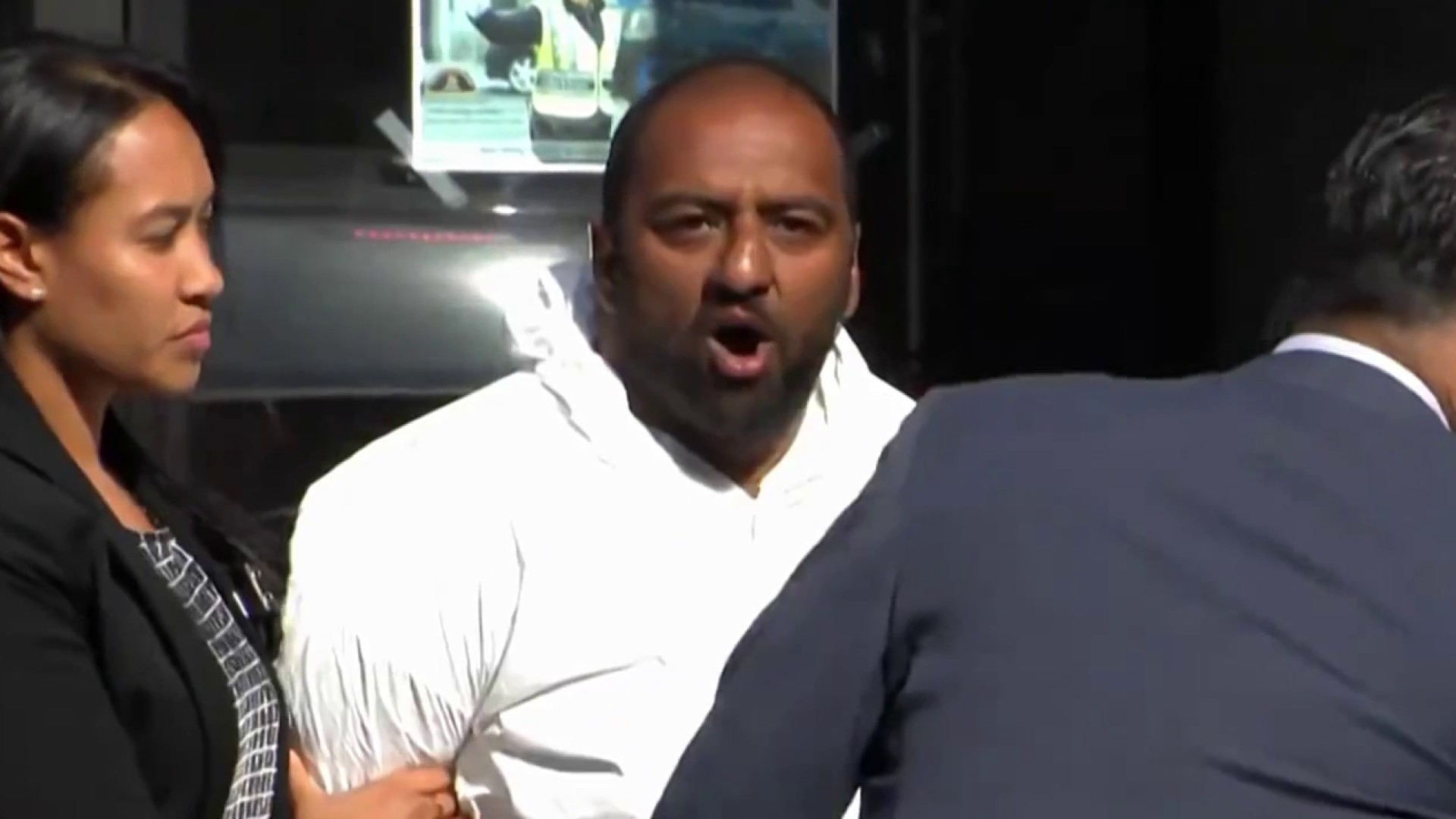School Cellphone Ban in NY: What Parents Need to Know!
New York Schools Go Phone-Free: ‘Bell-to-Bell’ Ban Announced!
Introduction: Turning Off the Noise – A New Era for New York Students?
Imagine a classroom where the only ringing you hear is the actual school bell. No buzzing notifications, no distracting pings, just focused learning. Sounds like a dream, right? Well, in New York, it might just become a reality. Governor Kathy Hochul has announced a groundbreaking agreement with state lawmakers to implement a statewide “bell-to-bell” cellphone ban in public schools, starting next school year. But what does this mean for students, teachers, and the future of education in the Empire State? Let's dive in!
The Rationale Behind the Ban: Protecting Young Minds
Why the sudden change? According to Governor Hochul, it's all about protecting our kids. “We’ve protected our kids before from cigarettes, alcohol, and drunk driving, and now we’re protecting them from addictive technology designed to hijack their attention,” she stated. It's a bold comparison, but it highlights the growing concern about the impact of constant cellphone use on young minds. Are our phones becoming the new cigarettes?
Flexibility and Exemptions: One Size Doesn’t Fit All
Hochul's office understands that a blanket ban won't work for everyone. Schools will have some flexibility in how they implement the ban, particularly when it comes to storing devices during the school day. What's the best way to handle this – lockers, pouches, or something else entirely? Districts will have to figure it out. Furthermore, there will be exemptions for students who need access to their phones for medical reasons, learning disabilities, or language barriers. This ensures that students who rely on their devices for legitimate reasons won't be left behind.
Joining the Movement: New York Not Alone
New York wouldn't be the first state to take this step. In fact, they're joining a growing number of states, including California, Florida, Indiana, Louisiana, Minnesota, and Ohio, already grappling with the same issue. Is this a trend, or a necessary intervention in an increasingly digital world? Only time will tell.
H2: Potential Benefits: Focus, Engagement, and Social Interaction
H3: Enhanced Focus and Concentration
One of the biggest hopes for the ban is improved focus in the classroom. How can students truly concentrate on algebra when their phone is buzzing with social media updates? Eliminating the constant distractions could lead to better academic performance and a deeper understanding of the subject matter. Imagine the power of uninterrupted learning!
H3: Increased Student Engagement
With phones out of the picture, students might be more inclined to participate in class discussions, group projects, and other interactive activities. Could this spark a renewed interest in learning and a greater sense of community within the classroom?
H3: Face-to-Face Social Interaction
Let's be honest, we've all seen students glued to their phones, even when surrounded by their peers. A phone ban could encourage more face-to-face interaction, fostering stronger social skills and building genuine connections. Remember what it was like to actually *talk* to people?
Potential Challenges: Resistance, Enforcement, and Alternative Solutions
H3: Student and Parent Resistance
It's safe to say that not everyone will be thrilled about this ban. Students may feel that their freedom is being restricted, while parents may worry about being unable to reach their children in case of emergencies. Addressing these concerns proactively will be crucial for successful implementation.
H3: Enforcement Difficulties
How will schools actually enforce the ban? Will teachers be burdened with policing phone usage? What are the consequences for breaking the rules? A clear and consistent enforcement strategy is essential to prevent chaos.
H3: Finding Alternative Solutions
Instead of an outright ban, are there other ways to address the problem of cellphone distraction? Could schools incorporate technology in a more constructive way, teaching students responsible digital citizenship and promoting mindful phone usage?
The Tech Factor: What About Tablets and Laptops?
The ban specifically targets cellphones, but what about other devices like tablets and laptops? Many schools now use these tools for educational purposes. Will the ban extend to these devices, or will they be subject to different rules? This distinction needs clarification.
Teacher Perspectives: A Mixed Bag?
How do teachers feel about the proposed ban? Some may welcome the opportunity to create a more focused learning environment, while others may worry about the logistical challenges of enforcing the rules. Gathering teacher input and providing them with adequate support will be essential.
Parental Involvement: Key to Success
The success of this ban hinges on parental involvement. Parents need to understand the rationale behind the policy and reinforce it at home. Open communication between schools and parents will be crucial for building a supportive ecosystem.
The Long-Term Impact: Shaping Digital Habits
Ultimately, the goal of this ban is to shape students' digital habits and promote a healthier relationship with technology. Will it work? Will students learn to disconnect and engage more fully with the world around them? Only time will tell if this intervention has a lasting impact.
Beyond the Classroom: Addressing Digital Addiction
Cellphone addiction is a societal problem that extends far beyond the classroom. While the ban is a step in the right direction, it's important to address the underlying issues of digital dependency and promote responsible technology use in all aspects of life.
The Budget Angle: Funding and Resources
Implementing a statewide cellphone ban will require resources. Schools may need to invest in lockers, pouches, or other storage solutions. Will the state provide funding to help schools cover these costs? This is a critical question that needs to be addressed.
Legal Considerations: Privacy and Student Rights
Any policy that restricts student cellphone use must be carefully considered from a legal perspective. Schools need to ensure that the ban does not violate students' privacy rights or other constitutional protections.
Looking Ahead: The Future of Education in a Digital World
The New York cellphone ban is just one example of how schools are grappling with the challenges of technology in the classroom. As technology continues to evolve, educators, policymakers, and parents will need to work together to create learning environments that foster both academic success and responsible digital citizenship. The question is, can we navigate this digital frontier effectively?
Conclusion: A Bold Experiment with Uncertain Outcomes
The "bell-to-bell" cellphone ban in New York schools represents a significant shift in how we approach technology in education. While the potential benefits – improved focus, increased engagement, and enhanced social interaction – are enticing, the challenges of implementation and enforcement are undeniable. Ultimately, the success of this initiative will depend on collaboration, communication, and a shared commitment to creating a healthier and more productive learning environment for all students. Whether it’s a stroke of genius or a misguided overreach remains to be seen.
Frequently Asked Questions (FAQs)
Here are some frequently asked questions about the new cellphone ban in New York schools:
-
Q: When will the cellphone ban go into effect?
A: The ban is expected to begin with the start of the next school year.
-
Q: What happens if a student is caught using a cellphone during the school day?
A: The consequences for violating the ban will likely vary by school district. Schools will need to establish clear disciplinary procedures.
-
Q: Will there be any exceptions to the ban?
A: Yes, there will be exemptions for students who need access to their phones for medical reasons, learning disabilities, or language barriers. The specifics of these exemptions will likely be determined by each school district.
-
Q: How will schools store students' cellphones during the school day?
A: The method of storage will be determined by each school district. Some options include lockers, pouches, and designated storage areas.
-
Q: What can parents do to help their children adjust to the cellphone ban?
A: Parents can talk to their children about the reasons for the ban, reinforce the rules at home, and encourage alternative activities that don't involve cellphones. Open communication with the school is also essential.


